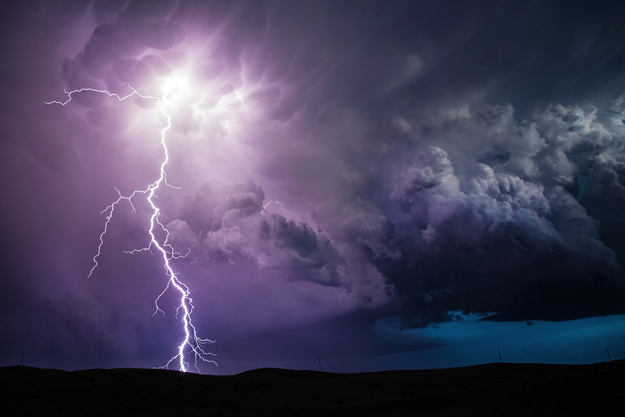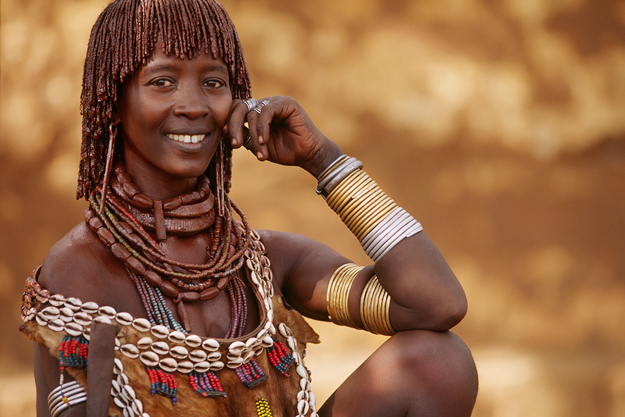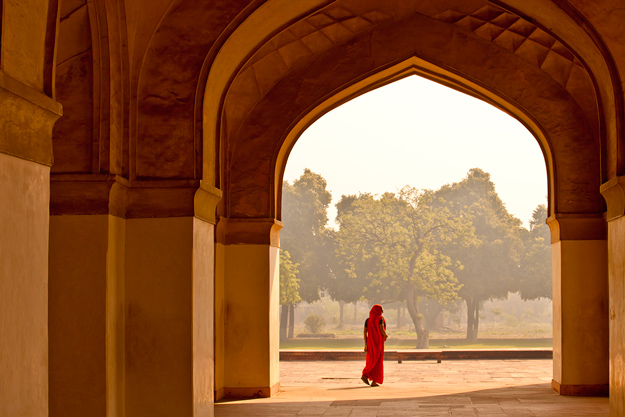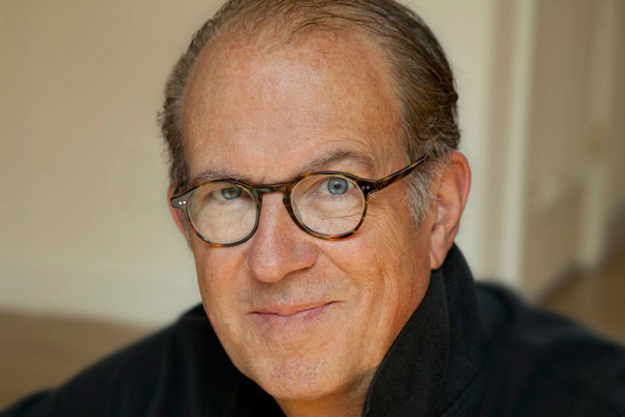What An Amazing Trip It Has Been . . .

Skeleton Trees, Lake Kariba (Zimbabwe) © Eric Meola 2014
In the late fall of 1989, as the Boeing 747 I was in began to reach altitude, an errant ray of sunlight caught my drooping eyes and prevented me from dozing off. I looked over at Harold Tseu, my studio manager, who was wide awake sitting next to me, his eyes bugging out as he held a magazine in front of him. I could almost imagine a thin stream of spittle drooling from the corner of his mouth. Finally, he spoke, looking right at me: “Man, look atTHIS!”

The Road to Mandalay, Burma © Eric Meola 2014
I glanced over at what was captivating Harold, an energetically intelligent young Taiwanese kid who had become the resident computer geek at my photo studio in Manhattan. Harold turned the magazine spread towards me so that I could see just what it was that had caught his attention. There she was, Miss September. Well, sort of. I found myself looking at a glossy, rectangular beige box called a Mac II fx, which Harold explained to me would be introduced the next year. He couldn’t contain himself, and as he tried to talk me into buying one—because it was FASTER than our aging, two-year-old Mac II gathering dust back at the studio—I rolled my eyes and went back to dozing. I fell asleep somewhere over Ohio as I vaguely heard Harold’s voice rattling off a stream of statistics.

Vicuña on Ridge, Argentina
My journey down the rabbit hole of technology began in the late spring of 1987, when I got a visit at my studio in Manhattan from an old college friend and Margaret Bourke-White biographer Sean Callahan. After wrapping up his 10th anniversary issue ofAmerican Photographer, he was starting over by trying to reinvent himself as an editor in the digital realm. He was carrying a gift—a new Mac II computer loaded with a program called PhotoMac.

Lightning Storm, Nebraska
Sean was working with a software entrepreneur, Rudy Burger, on developing the first color image processing package for the consumer market and the Apple platform. Burger, a Watson Fellow at IBM, had left there to create a software subsidiary for a hardware company in Massachusetts called Data Translation. (Photoshop was still a research project of the Knoll brothers at the University of Michigan, and this was about a year before they sold their product to Adobe.) Sean and Rudy wanted to see what working photographers could do with this tool and, in exchange, get some images that they could use to market PhotoMac to the emerging desktop publishing market.
The Mac II came with a whopping 1MG of memory, and I still remember inserting a second 3.5”, 1.44 MB floppy to write the second half of my first digital image, created in what was at the time a precursor to the image editing programs we use today. Although I had no idea what I was getting into, soon I found myself in a rat’s nest of SCSI cables, rebooting System 7.5 over and over and clicking the checkboxes next to the system’s inits and control panels in a desperate attempt to find out just which one was conflicting with a newly installed program.

Hamar Woman, Ethiopia
And so, in the summer of 1990 I granted Harold his wish and bought my second computer, the Mac II fx, for $10,000. Yet I had something else in mind—I wanted to scan my images. At that time there were very few scanners available. So one day I took the ferry from Orient Point, New York to Shelter Island, and then across the Long Island Sound to New London, and drove up to Massachusetts. A small company called Leaf was making what was then a high end 35mm and medium format scanner. I bought one, and began making my own scans, but no one could tell me what size file I needed to make!
After days of deliberation and tests, I settled on a 24MB scan—small enough that I could accept the hour it took to make the scan, and just big enough to make me climb the walls as I listened to the geared motors pushing the image through the film gate. Soon, I had my own museum of technology, filled with the detritus of abandoned technologies—magneto-optical drives, Zip drives, adapters, and “things” which I could no longer identify. Installation disk after installation disk, along with ever-growing lists of serial numbers, passwords, and kick-the-soda-machine-to-make-it-work tricks.

Departure Lounge, London
In a few brief years at the end of the 20th century, I had morphed into a photographer who was straddling the film and digital worlds. In 1995, just eight years after I made my first digital image using “floppies”, Kodak gave me an assignment to photograph on film some of the “last places on Earth.” As I flew to Paris on my way to Niger in West Africa, neither I nor Kodak realized just how fast the digital world was closing in on us.
Ten years later, Hitachi introduced the first 500GB hard drive, following it in 2007 with the first 1TB hard drive. The largest hard drive currently available as a single drive is a 6TB Hitachi, although Western Digital has demonstrated a 60TB hard drive. A terabyte is a million megabytes. What comes after terabytes? Petabytes. Followed by exabytes, zettabytes, and yottabytes. And then? Brontobytes—a 1 followed by 27 zeroes. Of course, these are numbers that need perspective. Several exabytes of data are created on the Internet each day—approaching the equivalent of a billion DVD’s. Each DAY!

Desert Rendezvous, Niger (West Africa) © Eric Meola 2014
What kind of digital world do we live in? One in which 72 hours of video are uploaded to YouTube per minute, translating to a terabyte every four minutes. One in which 500 terabytes of new data per day are ingested into Facebook databases. And speaking of Malaysia flight 370, one in which the sensors from a Boeing jet engine create 20 terabytes of data every hour. As Google CEO Eric Schmidt said several years ago, “Every two days now we create as much information as we did from the dawn of civilization up until 2003.”
And so, sitting here in my office, looking at my shiny new Mac Pro—a 6 core, 3.5 GHz model, with an internal 1TB SSD, I just realized it has a million times the memory of my first computer! No, I haven’t abandoned my quest to thrash my way through new technology which will all too soon be obsolete. Next to the Mac Pro is an 8TB RAID 5 Thunderbolt 2 drive, along with a couple of legacy eSata FirmTek enclosures, each with two 4TB drives set as RAID 0 for backup. Nearby are a matched pair of NEC PA302W-BK 30” LED monitors, and Ethernet connects me to the 44” wide printer in my basement.

Boy on Bus, Guatemala
What does this shiny black cylinder dubbed “the trashcan” do? It opens images—fast. It copies images—fast. It imports, rotates, sharpens and otherwise slices and dices images that contain thousands of megabytes of data, far faster than Harold’s wildest wet dream of twenty-five years ago. Am I happy with it? Yes, of course. It’s so much faster than my aging 2007 Mac Pro “tower” that seemed so futuristic just 7 years ago. That was then, this is now.
Where will this end? Somewhere in a faraway place called the future—a place of many zeroes and ones and a million times more memory. Some place much faster—a place so fast we can never seem to get to it.

Woman in Red Sari, Rajasthan
Eric MEOLA

Showcasing a portfolio of his color images in its October 2008 issue, Rangefinder magazine referred to Eric as one of a “handful of color photographers who are true innovators.”
Eric Meola’s graphic use of color has informed his photographs and his distinguished career for more than four decades. His prints are in several private collections and museums, including the A.S.M.P. archive, the National Portrait Gallery in Washington, D.C., the International Center of Photography in New York, and the Museum of Modern Art in Munich. He has won numerous awards including the “Advertising Photographer of the Year” award from the American Society of Media Photographers.
In 1972 he photographed Haiti for Time magazine, resulting in one of his most famous images, “Coca Kid,” which was included in Life magazine’s special 1997 issue “100 Magnificent Images.” In 1980 he had his first major exhibit in New York at the “Space” gallery in Carnegie Hall and his signature red, white and blue image “Promised Land,” was chosen for inclusion in the permanent collection of the George Eastman House. In 1989 he was the only photographer named to Adweek magazine’s national “Creative All-Star Team”; and that same year he received a “Clio” for a series of images he made in Scotland for a breakthrough campaign featuring the outerwear clothing of the Timberland company. “Fire Eater,” his iconic image of the spotlit lips of a woman submerged in a tank of water, and commissioned by Almay cosmetics, was included in Robert Sobieszek’s 1993 book on advertising The Art of Persuasion.
As an undergraduate at Syracuse University, he studied color printing and color theory at the Newhouse School of Journalism before graduating in 1968 with a B.A. in English Literature and then moving to NYC in 1969 to work with Pete Turner as his studio manager. A Canon “Explorer of Light,” he has lectured extensively, including at Syracuse University, Rochester Institute of Technology, Brooks (Santa Barbara), the Art Center at Pasadena, Parsons, the Academy of Art College (San Francisco), the George Eastman House, and venues including PPA., WPPI, and A.S.M.P.
In 2004, GRAPHIS published his first book The Last Places on Earth, a look at disappearing tribes and cultures throughout the world. An exhibition in England of his photographs of Bruce Springsteen, which coincided with the publication of his second book Born to Run: The Unseen Photos (Insight Editions, 2006), was followed in 2008 by INDIA: In Word & Image (Welcome Books, NY), and an exhibit in 2009 at the Art Directors Club of New York.
Learn more about EricHERE . .
Other Articles of Eric’s published here on Luminous-Landscape. The Architecture Of A New Landscape, Seeing In Color, andEdward Curtis: The Man Who Never Slept
April 10, 2014
You May Also Enjoy...
Route 168
Route 168 Aspens #1, Route 168, October 1999 At the base of the Eastern Sierra in California on Highway 395 lies the town of Bishop.
Photography in Space
20 April, 2012Two years ago today, I was tremendously privileged to land Space Shuttle Discovery after commanding her on her penultimate mission. It just so happens
